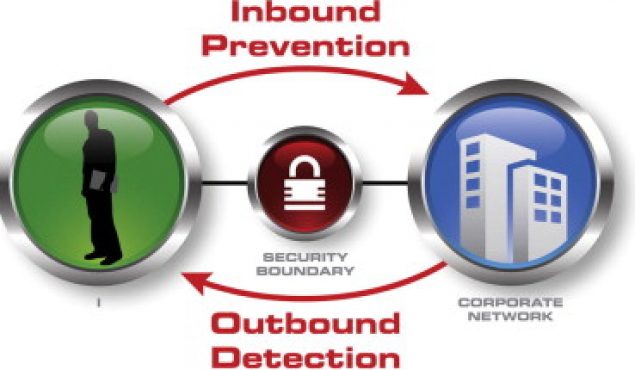Recently one of our customers asked me to provide them with information about the risks of unrestricted or lightly restricted outbound network traffic. As such, I decided to write this blog entry and share it with everyone. While some of the risks behind loose outbound network controls are obvious, others aren’t so obvious. I hope that this blog entry will help to shed some light on the not so obvious risks.
In all networks, there are two general types of network traffic, inbound and outbound. Inbound network traffic is the type of traffic that is generated when an Internet based user makes a network connection to a device that exists in your business infrastructure. Examples of such connections are browsing to your website, establishing a VPN connection, checking email, etc. Outbound network traffic is the type of traffic that is generated when a LAN based user (or a VPN connected user in some cases) makes a network connection to a device somewhere on the Internet.
Just about everyone is familiar with the risks that are associated with the inbound type. Those risks include things like Vulnerable Web Applications, unpatched services running on Internet facing production systems, etc. In fact, most people associate the idea of security with the inbound connection type more so than the outbound type. As a result, they end up leaving the most vulnerable part of their business open to attack.
The truth is that the size of the attack surface for the outbound connection type is considerably larger than that of the inbound connection type. The attack surface is best defined as the sum of all potential risk points for a particular group of targets. In the case of the outbound connection type, the potential risk points include every variant of software installed on every device capable of making outbound connections (and helper applications too). This includes technologies like Adobe Acrobat, Mozilla Firefox, Internet Explorer, Flash, QuickTime, Microsoft Office, Safari, FTP Programs, Security Scanners, Antivirus Technologies, Smartphones, etc.
One example of an attack would be something like this. An employee receives an email containing an interesting blog entry from Netragard, LLC. That email contains a link that points to a malicious payload designed to compromise the employees computer. When the link is clicked, a request is made to download the payload, which results in the employees computer being compromised. Upon compromise the employees computer establishes an outbound *HTTPS connection to the attacker, and the attacker tunnels back in over that connection to take control of the employees computer. In most cases, the employee has no idea that they’ve been compromised, nor does their employer.
The compromise doesn’t stop at the employees computer. The instant that the employees computer is compromised then the network that the computer is connected to is also compromised. At that point the attacker can use ARP Poisoning to perform Man in the Middle attacks (or other more direct attacks), or just to capture user credentials. Either way distributed metastasis is almost inevitable if the attacker has any semblance of skill. (Thank god Netragard didn’t really embed a malicious link in this blog entry right?).
The good news is that suffering a compromise doesn’t need to be costly or technically damaging. If the proper policies, procedures and controls are in place then a compromise can be relatively harmless from a cost in damages perspective. Outbound connection controls are an example of controls that everyone should have in place.
If outbound connections are restricted to specific protocols and can only be established by authenticated users then attacks like the one described above will be largely ineffective. The outbound controls might not always prevent the users computer from being compromised, but they will usually prevent the users computer from establishing a connection back to the attacker (which will ideally prevent the attacker from taking control of the computer). In such a case, the computer will need to be reinstalled but at least the rest of the network will still be intact.






